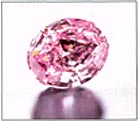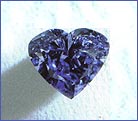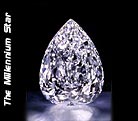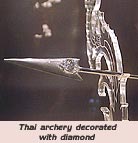| |
Garnet
derived its name from the Latin word granatus, meaning like a grain, which
refers to the mode of occurrence wherein crystals resemble grains or seeds
embedded in the matrix. Garnet is a family of minerals having similar
physical and crystalline properties. There is a number of trade and variety
names for garnet, most of these names are for particular colors of a species.
Garnet is the birthstoneforthe month of
January & the anniversary gemstone for the second year of marriage.
The fantastic found of an up to then extremely rare Garnet variety puzzled
experts all over the world some years ago. On the Kunene River, on the
border between Namibia and Angola, there was the surprising and spectacular
discovery of bright orange to red Spessartine Garnets, which were originally
named after their occurrence in the German Spes-sart Mountains. Until
the legendary mine was discovered in Namibia, Spessartines had existed
as mere collector's items or rarities. They were hardly ever used for
jewellery.
An expert will understand "Garnet"
as the denomi nation for a group of over ten different gemstones
with a similar chemical structure. |
|
| |
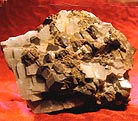 |
|
Although the colour
red is the one which occurs most frequently, there are also Garnets
showing different shades of green, pale to bright yellow, fiery
orange and fine earth- and umbra-shades. Only blue is a colour which
is not available in Garnet. Garnets are gemstones which are in high
demand and are often worked into pieces of jewellery - especially
since today not only the traditional gemstone colours red, blue
and green are cherished by the consumer, but the intermediate shades
and hues are also very popular. Besides the realm of Garnets also
possesses rarities such as asterism or atones which change
their colour from daylight to artificial light. |
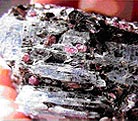 |
|
What else characterizes
this gemstone family? First of all, there is the excellent hardness
of 7 to 7.5 on the Mohs' scale. This applies, with minor variations,
to all the members of the Garnet group. And this is also an explanation
why these gemstones are so excellent to wear. Garnets are quite
sturdy and resistant to everyday wear and tear, and uncomplicated
to work into jewellery. Only to hard impact or uncontrolled heating
they will react adversely. Another point in favour of Garnets is
their high refraction of light, the reason for the amazing brilliance
of Garnets. |
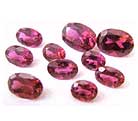 |
|
Garnets have been widely known for thousands of
years. Even Noah, it is reported, used a lantern from Garnet in order
to safely steer his Ark through the darkness of the night. Garnets
are found in jewellery from ancient Egyptian, Greek and Roman eras.
Many courageous discoverers and travellers wore Garnets for protection,
as they were considered popular talismans and protective
stones, because it was believed in those days that Garnets illuminate
the night and prevent their wearer from any sort of evil. Today science
explained to us that the proverbial luminosity of Garnet is caused
by its high refraction of light. |
Garnets
come not only in many colours but also under many names: Andradite,
Demantoid, Grossularite, Hessonite, Pyrope, Rhodolith, Tsavorith,
Spessartine, Uwarowite etc. Let us focus on the most important ones,
and let us start with red Garnets. First of all, there is fiery
red Pyrope. Its fierce and often slightly bronze coloured red was
highly popular as gemstone colour in the 18th and 19th century.
Worldwide renowned in those days were the Bohemian Garnets from
an occurrence in the north-eastern part of the former Kingdom of
Bohemia - small stones in a wonderful colour. In Europe they were
frequently used for jewellery in Victorian times. This genuine Bohemian
Garnet jewellery is traditionally decorated with many small stones
which are tightly arranged along each other like the seeds of a
pomegranate. Today Garnet is still found in the Czech Republic,
and the stones are still arranged in the traditional way, tightly
joined, so that the attraction of the classical Garnet jewellery
is caused by the beauty of the stones only. |
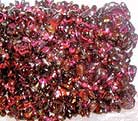 |
|
The large central stones of the
typical "rosette" arrangements are usually also Garnets,
but these come from another category. Almandines, named after the
ancient gemstone city of Alabanda in Asia Minor, are c a little
different in their chemical structure from Pyropes. Why these
are preferred as central stones? Well, Nature only grows Pyropes
in small sizes, but allows for Almandine crystals in larger dimensions. |
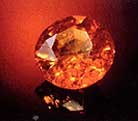 |
|
Today these stones
come mainly from African countries, also from India, Russia, central
and south America. The skilled hands of cutters all over the
world shape them in many classical forms and more and more also
in modern fancy designer's cuts. Garnets appeal generally because
of their natural and not manipulated beauty, their wide variety
of colours and their magnificent brilliance. If you buy Garnet jewellery
you can be certain to enjoy this gemstone gift from Nature permanently
and without inhibitions. |
|
|


